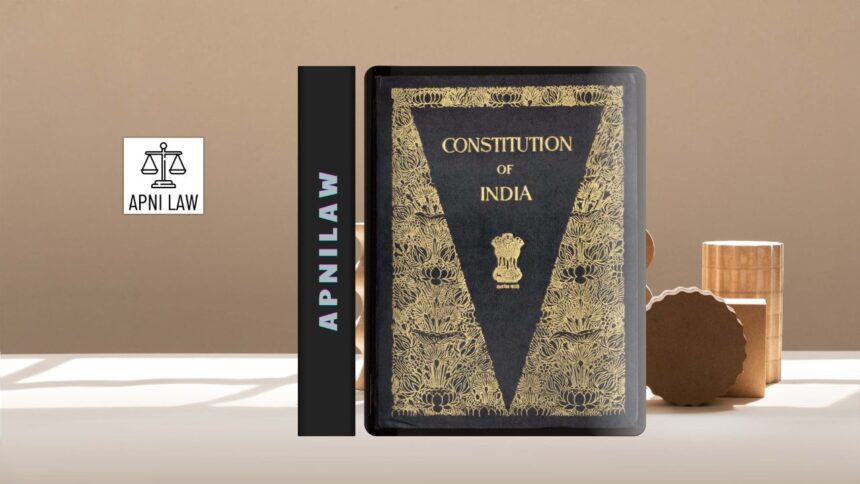India functions as the largest democracy in the world, and its parliamentary system forms the backbone of governance. The system ensures representation and accountability while also facing challenges of instability and inefficiency. By studying its strengths and weaknesses, one can understand why India chose this model and how it continues to shape governance in a diverse and complex nation.
Why Does the Parliamentary System Promote Representative Diversity?
India is home to enormous diversity. People differ by language, religion, region, and ideology. The parliamentary democracy allows this diversity to find a place in decision-making. Representatives elected to the Lok Sabha mirror the varied aspirations of citizens. Political parties, both national and regional, gain a platform to raise issues and influence policies. The system thus prevents domination by a single interest group. It ensures that policies reflect multiple perspectives. In a country as vast as India, this inclusiveness strengthens legitimacy and trust in governance.
How Does the System Ensure Executive Accountability?
The heart of parliamentary democracy lies in executive accountability to the legislature. Ministers cannot remain in office without the confidence of the Lok Sabha. Members question ministers daily on government policies and administrative actions. The possibility of a no-confidence motion always exists. This threat ensures that the government acts responsibly and avoids arbitrary decisions. Accountability also fosters transparency. Citizens indirectly monitor government performance through their elected representatives. This continuous oversight makes the system people-centric.
Why Does the System Reduce the Risk of Authoritarianism?
Power in India does not rest with a single person. Instead, the Prime Minister governs with the Council of Ministers. Decisions flow from collective responsibility rather than individual will. This arrangement reduces the risk of authoritarian tendencies. No Prime Minister can act unchecked without support from the Cabinet and the Parliament. The requirement of majority confidence acts as a democratic safeguard. It ensures that political power remains dispersed. India’s choice of this system directly reflects its fear of concentration of authority after colonial rule.
How Does Parliamentary Democracy Support Coordination?
The parliamentary framework fuses the executive and legislative functions. Ministers are also members of Parliament. This overlap allows for close cooperation. Policies drafted by the executive pass more smoothly through legislative processes. Disputes between the two branches occur less frequently compared to presidential systems. Administrative efficiency improves when ministers play dual roles as lawmakers and executives. Coordination helps in quicker decision-making and smoother implementation of government programs.
Why Does the System Allow Availability of Alternate Government?
Parliamentary democracy creates room for alternate governments without waiting for fixed terms to expire. If the ruling party loses majority support, another party or coalition can form the government. This prevents governance from coming to a halt. It also keeps the ruling party responsive, knowing that loss of confidence can lead to replacement. India has witnessed several peaceful transfers of power without national elections. This flexibility strengthens democratic stability while preserving continuity of administration.
How Does Coalition Politics Encourage Consensus Building?
India’s multiparty system often produces coalition governments. Coalitions demand negotiation and compromise. Parties with different regional and ideological bases must work together. This dynamic ensures that diverse aspirations find accommodation in governance. Policies evolve through discussion and consensus rather than imposition. Although coalition politics sometimes cause instability, they also prevent exclusion of regional voices. The practice enhances democratic participation by compelling political groups to share power.
Why Does the Parliamentary System Create Government Instability?
The strength of accountability sometimes turns into a weakness. Governments survive only with majority support. Coalition governments face constant pressure to maintain alliances. Policy continuity suffers when governments change frequently. India has witnessed several unstable periods, particularly in the 1990s, when coalition governments collapsed repeatedly. This instability weakens long-term planning and decision-making. It creates uncertainty in governance and slows down developmental work.
How Do Multiplicity of Parties and Defection Affect Governance?
The presence of numerous parties reflects diversity, but it also causes problems. Small parties can hold disproportionate influence in coalition negotiations. Defections by members of legislative assemblies or Parliament destabilize governments. Legislators sometimes switch sides for personal gain, leading to political instability. Though the anti-defection law curbed some of these practices, challenges remain. Multiplicity of parties also weakens the opposition, as votes scatter among many groups. This fragmentation sometimes prevents a strong check on the ruling party.
Why Does the Lack of Separation of Powers Weaken Checks and Balances?
In India’s parliamentary system, the executive and legislature overlap. Ministers serve in both roles. When the ruling party holds a large majority, this fusion reduces legislative independence. The legislature may fail to question the government effectively. This weakens the principle of checks and balances. Unlike the presidential system, where executive and legislature operate separately, parliamentary democracy risks executive dominance over Parliament. Strong majorities often turn the legislature into a body that merely endorses executive decisions.
What Is the Problem of Cabinet Dictatorship?
When a party holds overwhelming majority support, the Cabinet may dominate governance. Parliament, instead of checking the executive, becomes an instrument to approve Cabinet decisions. The Prime Minister and senior ministers take most crucial decisions, leaving little room for debate. This phenomenon of Cabinet dictatorship undermines the intended balance of power. While it ensures quick decision-making, it often sidelines the representative role of Parliament. India has seen instances when dominant parties concentrated power within the Cabinet, limiting democratic oversight.
Why Is Government by Amateurs Considered a Disadvantage?
Parliamentary democracy in India requires ministers to come from the legislature. This rule often excludes outside experts from ministerial posts. Elected members may lack administrative experience or technical expertise. As a result, governance sometimes suffers from inefficiency. Ministers must learn administrative work on the job, and frequent reshuffles disrupt continuity. Critics argue that the system prioritizes political loyalty over professional competence. Although bureaucrats and advisors assist ministers, decision-making power ultimately rests with political leaders who may lack expertise.
How Do Coalition Politics and Disruptions Cause Delays?
Coalition governments face the constant challenge of maintaining unity. Disagreements among coalition partners slow down decision-making. Policies often require compromises that dilute effectiveness. Parliamentary sessions in India frequently face disruptions. Walkouts, adjournments, and protests delay legislative work. These practices reduce Parliament’s efficiency and waste valuable time. Coalition dynamics, combined with disruptions, prevent the government from addressing pressing issues promptly. The system struggles to balance accountability with efficiency.
What Balance Emerges from Advantages and Disadvantages?
India’s parliamentary democracy offers both inclusiveness and challenges. On one side, it ensures accountability, diversity, and protection against authoritarianism. It allows representation for multiple voices and provides flexibility in government formation. On the other side, it suffers from instability, inefficiency, and risks of Cabinet dominance. Multiplicity of parties and weak opposition often compound the problem. The system must constantly balance accountability with the need for stable governance.
For any specific query call at +91 – 8569843472
Conclusion
Parliamentary democracy in India reflects the nation’s choice for representation and responsibility. It brings together voices from every corner of the country and keeps the executive answerable to the legislature. At the same time, it struggles with instability, inefficiency, and weak separation of powers. The system thrives when accountability functions with stability, but falters when coalition politics and disruptions dominate. Despite challenges, parliamentary democracy remains central to India’s political identity. It reflects the spirit of inclusiveness and accountability that forms the foundation of the Constitution.







